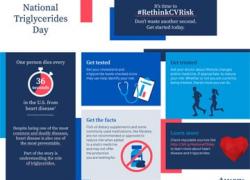Malt Makes a Comeback, Packing Powerful Nutritional Benefits
As Americans strive to satisfy their appetite for the next nutritional trend, malt is a resounding reminder that sometimes our ancestors truly do know best.
Malt is nostalgically remembered as a cornerstone of American culture, conjuring fond memories of vintage "malt shops" or a delicious glass of Ovaltine™ malted milk. But, what exactly is malt?
Malt is basically sprouted barley. By sprouting the barley, the grain's enzymes are unlocked with only water and heat in an ancient, natural process that releases the whole grain's nutritional power. Malt can be further processed to produce liquid or powder sweeteners called malt extracts that are used in beverages (beer, malted shakes, energy drinks), baked goods (cakes, pretzels, breads), cereals and snacks (protein bars, yogurts, confections), and other foods.
Malt Extract's Natural Health Benefits
* Athletic Recovery: Today, malt extract is drawing renewed attention as a naturally-functional ingredient that packs a host of powerful intrinsic health benefits - one reason that, among other uses, athletes are increasingly relying on malt extract-based beverages to replenish and recover.
* Boosts Happiness: Malt extract might actually make you happy! Malt extract contains Hordenine, a plant-based, naturally occurring compound that has been found in scientific studies to lift your spirits. Hordenine was shown to activate the dopamine D2 receptor, the brain's reward center, which causes this "feel-good" effect. It has also been reported to sharpen mental focus and heighten energy levels.
* Sweetener with Substance: Malt extract is not an empty sugar. When used as a sweetener, malt extract is a functional ingredient that serves as a source of antioxidants, essential amino acids, vitamins and minerals, and is made with whole grains. As an added benefit, malt extract has a significantly lower glycemic index than table sugar.
* Supports Digestive Health: Malt extract can be good for your gut. Malt extract is a rich source of soluble fiber, which helps improve digestion by optimizing good bacteria and minimizing bad bacteria. Studies show malt extract facilitates the growth of probiotic cultures that can enhance digestive health by supporting the good bacteria that lines the gut. This can help prevent illness and promote essential nutrient absorption, enhancing overall health.
* Promotes Heart Health: Malt extract is shown to reduce the risk of heart problems by helping to lower cholesterol. A heart-healthy mix, malt contains fiber, potassium, folate, and vitamin B6, which together lower cholesterol and decrease the risk of cardiac disease. Its dietary fiber helps reduce insulin activity and increases cholesterol absorption from the gut and encourages cholesterol breakdown. Studies indicate this promotes lower cholesterol by reducing plaque formation.
* Antioxidants Galore: Malt extract packs more than 5 times the antioxidant power of fresh broccoli and nearly 50 percent more than blueberries. It is an abundant source of vitamins, minerals, amino acids, dietary silicon (supports bone health), B complex vitamins and micro minerals. Consuming foods rich in antioxidants has been shown to strengthen heart health, support anti-aging, and lower risk of infection and some forms of cancer.
"Malt extract is emerging as a naturally-functional ingredient that consumers should look for in many of their favorite foods and beverages," says Amy Targan, president, Malt Products Corporation.
"Today's health-conscious consumer demands a diet enriched with ingredients that provide optimal flavor and nutritional function to complement their lifestyle."
Companies such as Malt Products Corporation provide all natural, non-GMO certified malt extracts to a multitude of leading bakery, confectionary, beverage, snack food, and cereal manufacturers nationwide.





